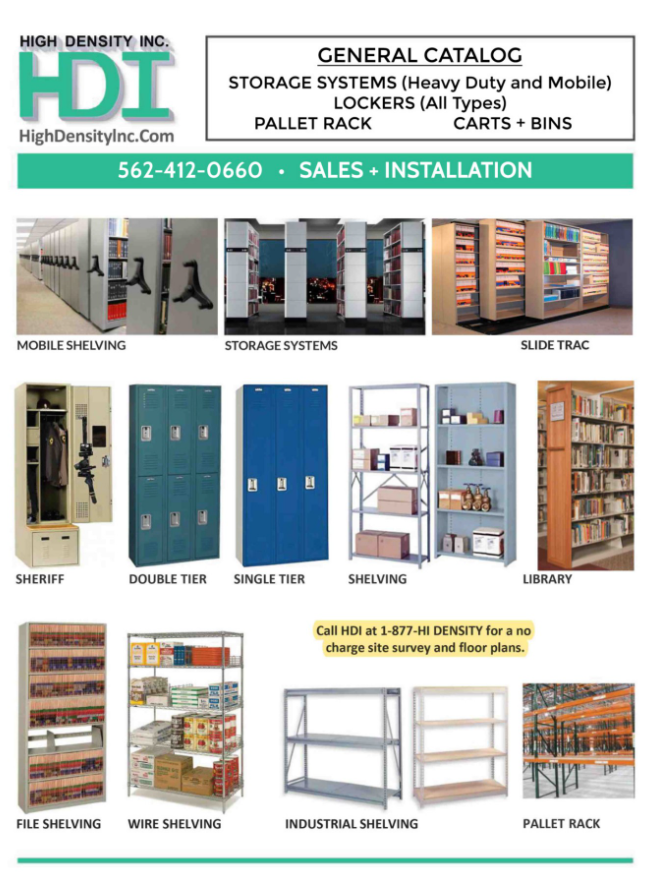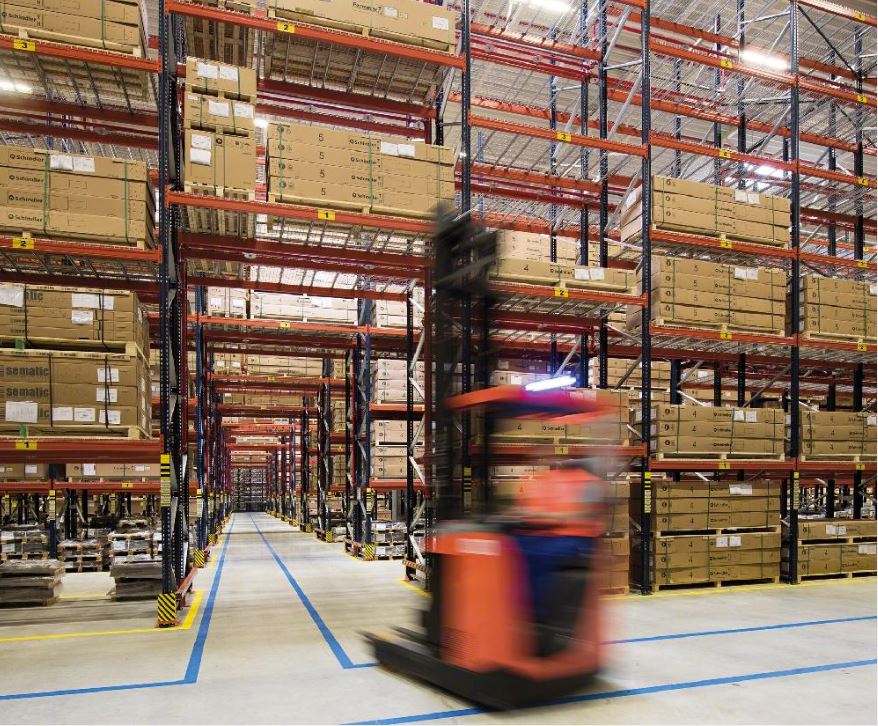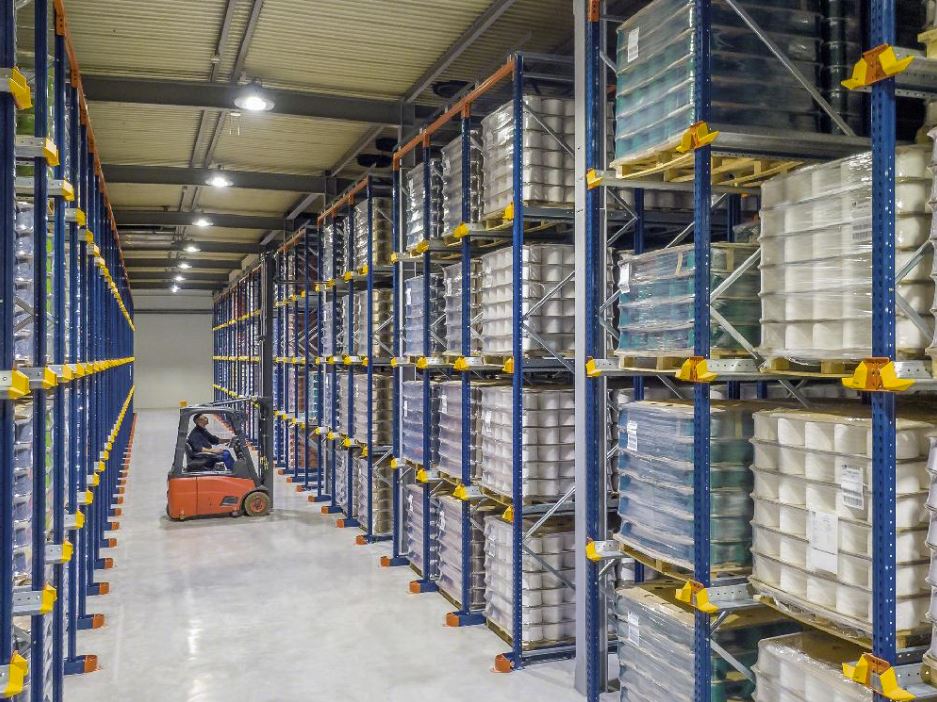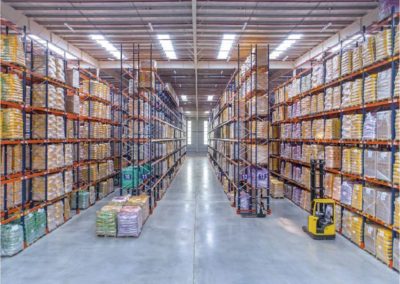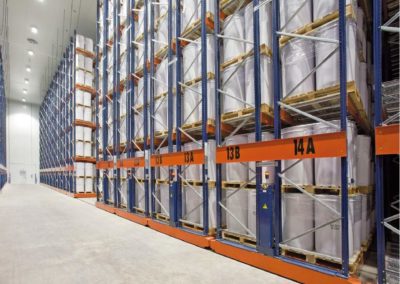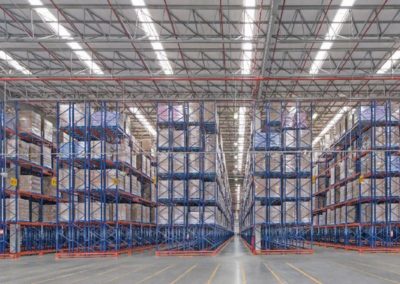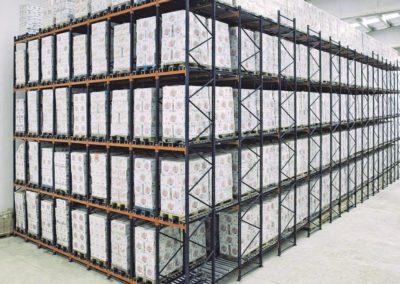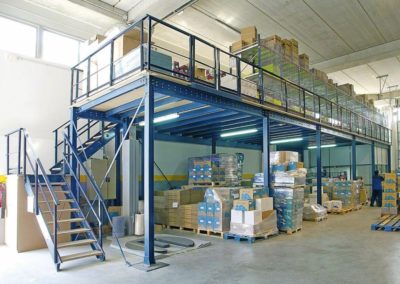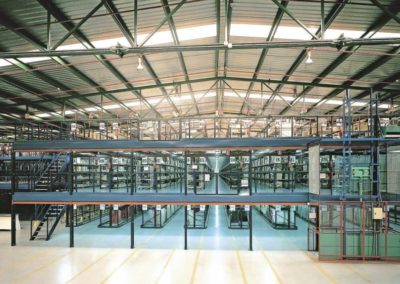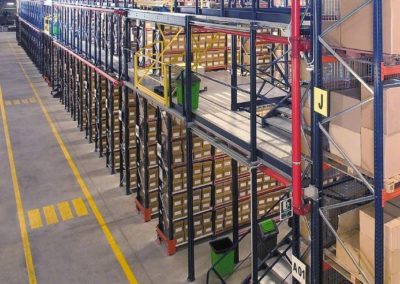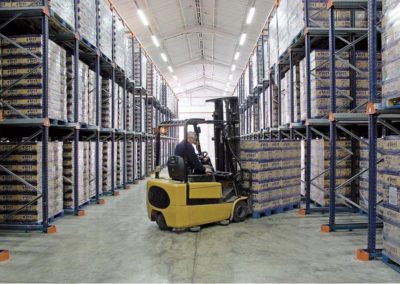PALLET RACK- AN OVERVIEW
With all types of Pallet Rack, the value of an on-site survey at your proposed facility is essential in product selection and layout. Here are some considerations:
- The actual nature of the commodities, including their composition (i.e., plastic, paper) dimensions, and the weight of the pallets
- Specific building conditions that can affect maximum rack loading and layout, such as columns, floor composition, and roof details
- Structural calculation by a state licensed engineer, as well as a fire code professional, addressing building and rack issues
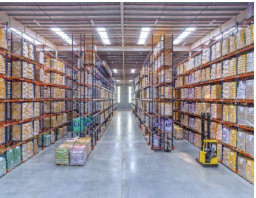 High Density, Inc. has vast experience with all these issues and can make a Pallet Rack project smooth and successful. Our services can include permit procurement from local building and fire departments!
High Density, Inc. has vast experience with all these issues and can make a Pallet Rack project smooth and successful. Our services can include permit procurement from local building and fire departments!
There are actual a multitude of different aspects that must be considered when designing and ordering pallet racking to ensure a proper fit for a material handling system. Therefore, it is important to allow ample time for HDI to analyze the many aspects of a proper rack design.
The design of pallet rack systems can be broken down into (3) major elements as follows: 1) details of the product being stored; 2) physical site variables; and 3) rack design variables.
Product Being Stored
- Size and Weight of the Product – This is the most important aspect of designing pallet rack systems. Since racks are designed with a built-in safety factor, it is important not to inflate the weight of the product, which will increase the cost of the rack components.
- Type and Construction of the Pallet – Because so many types of pallets are being used, it would be inaccurate to say that there is a “standard” pallet. That said, the “typical” pallet for the US market is a 40” wide x 48” deep wood pallet with entry on all four sides and bottom boards running front to back – commonly referred to as a GMA pallet. Note the distinction between a pallet and a skid is that a skid has no bottom boards.
- Storage of Product on Pallet – If product overhangs the pallet, the racks may need to increase in width or depth to accommodate the overhang.
The first thing to consider is the load (pallet and what’s on the pallet) and its dimensions. Is it heavy, light or in between? Load distribution is important. Pallet racks require evenly distributed loads. How tall is the load? How deep is the load? The combination of height, weight and depth play a significant role in determining capacity and the rack beam.
The right beam is essential
A pallet rack beam must support the weight of the load and desired dimension of the pallet load. Determining the dimensions can be a little confusing. Some companies talk about beam width while others talk about length. The reality is both are the same. For example, if you want to place two 40”x 48” pallets side by side, you multiply the load width (40”) times two, then add 12” more. The result is 80” plus an addition foot, or a beam width of 92”. Of course, you will need to check with your supplier on available sizes. Why the extra foot? Safety and fire codes require additional space between pallets; and the added space makes it easier for loading and unloading.
Now that you have the beam width appropriate for your product/load, it’s time to discover the capacity of that pallet rack beam. Load capacity for pallet rack beams are based upon a per pair load on the rack. For our purpose, let’s say we will place two pallet loads of 2000 lbs. each side-by-side on the rack. Therefore, you need a rack beam with a capacity of at least 4000 lbs. per pair to support the load safely. Rack manufacturers provide charts to help select the appropriate beam. You should refer to these charts when selecting a specific beam.
Uprights also affect capacity
Pallet rack beam capacity is important but not the only information you need to understand rack capacity. Rack height also determines its capacity. How many bays (levels) will the rack have? Will each bay has the same height dimensions, or will those dimensions vary to handle multiple product loads? The more distance between each rack beam, the less weight the pallet rack uprights can support. You must also include an extra six inches of height for each bay (again, for safety and code purposes).
For purpose of example, let’s take the information from above on the beam capacity. We want a rack with four bays with each bay having the same vertical dimension of 46” and a load capacity of 4000 lbs. The vertical frame (upright) must support 16,000 lbs. and a 46” vertical beam spacing. Again, rack manufacturers provide charts to help determine which rack equipment meet your criteria.
You’re almost ready to select the right pallet rack once you know its capacity. However, there are other items to consider before making your selection. These include seismic requirements, condition of the floor, damage potential your rack could incur and more. The best next step you can take is talking with a professional who can tailor the perfect rack system for your application.
Why does rack depth matter?
Rack depth measuring requires consideration of pallet depth. Pallets should have overhang on the rack in front and in the back of the rack. Three inches is typical. Therefore, measure the distance from the front of the rack to the rear. Racks storing the standard pallet size (40″ x 48″) should have a depth of 42-inches. This provides the necessary three inches on both ends to allow for easy access by a forklift. Ease of forklift access should also determine height measurements.
Maximizing a pallet load is desirable. However, a pallet with product stacked snuggly in the rack presents problems for forklifts attempt to load and unload. Therefore, the rule of thumb takes in consideration of the height of the pallet plus the load and adding an additional four to six inches to the height so there is enough clearance between the pallet load and the beam above — the rack’s next level.
Physical Site Considerations
- Fire-Life-Safety – Each local government has multiple codes related to fire, life, and safety that influence the pallet racking design. Chief among them is the walk distance to exit the building in the event of a fire (i.e. “egress” distance). Rack or storage locations may need to be removed from the design to comply with the maximum egress distance. Lights and exit signs may need to be added within the rack to light the egress path. The egress path may need to be clearly marked (and possibly with reflective tape).
- Seismic Classification – The government classifies each site location by potential ground motion in the event of an earthquake. All site locations have a seismic classification, even if the potential for an earthquake is low. Therefore, the building address is so important.
- Concrete Floor Specifications – This is used to determine if the concrete slab can support the weight of the pallet rack and the product being stored. Depending on the strength of the concrete, larger foot plates may be required to spread the load of your pallet racking.
- Separation Requirement – This is a measure of the minimum distance between the rack and any building elements, mainly the building columns. This requirement can significantly impact the layout, especially the quantity and width of the drive aisles.
- Sprinkler Requirement – In-rack sprinklers are typically determined by the type of product being stored and by the specifications of the insurance company. If sprinklers are required, additional distance between racks and special bracing may be necessary to accommodate the pipes passing through the racks.
- Building Specific Elements – These elements include size and type of building columns; location of roof drains or other obstructions on building columns; or presence of wind bracing (aka “K-bracing”).
Pallet Racking Design
- Definitions – An upright frame (1) is constructed of two vertical columns with bracing (2) between them. Horizontal beams (3) connect the uprights together and support the pallets.
- Rack Profiles – A “profile” is a drawing that shows the distance between beam levels for each bay of rack. If there are long spans between beam levels, additional bracing may be required.
- Reinforcement – Additional bracing of the upright frame may be required and is determined by the distance between beam levels and the seismic classification. This can include bracing that is thicker, bracing that has been doubled, and a different bracing pattern that is closer together.
- Beam Design – Beam design is driven by the seismic classification which determines the size and type of connector and how the connectors are welded to the ends of the beams. The length of the beams is determined by establishing the clearances required between pallets as they are stored on the rack as well as the distance required between the pallets and the rack uprights. Typical clearances normally fall within 4” to 6”.
- Closed Tube or Open Tube – This refers to the construction of the vertical columns of the upright frames. Columns can have an open back (“open tube”) or closed back (“closed tube”). Many times, the choice is customer preference, but there can be advantages of one over the other depending on the application.
- Structural Steel Racking – Structural steel may be utilized in lieu of formed steel racking, based on the application. Traditionally structural steel racking is more expensive than formed steel racking but can also provide increased load capacities if needed.
- Column Punching – the holes that are punched in the face of the vertical columns to which the beams are connected vary greatly by manufacturer. This is important in case the punching needs to match existing pallet rack.
- Pallet Racking Accessories – The most common accessories are wire decks, pallet support bars, column protectors, and end-of-aisle guarding. Please let your integrator know if these are required or desired for the application.
- Pick-Up and Drop-Off Stations – Pallet racking is typically designed with one bay removed from the end of every other row, so pallets can be temporarily stored on the floor until they can be put away inside the racks. These are referred to as P&D Stations (Pick-Up and Drop-Off Stations).
ABOUT US
HIGH DENSITY INC 2023 ALL RIGHTS RESERVED






